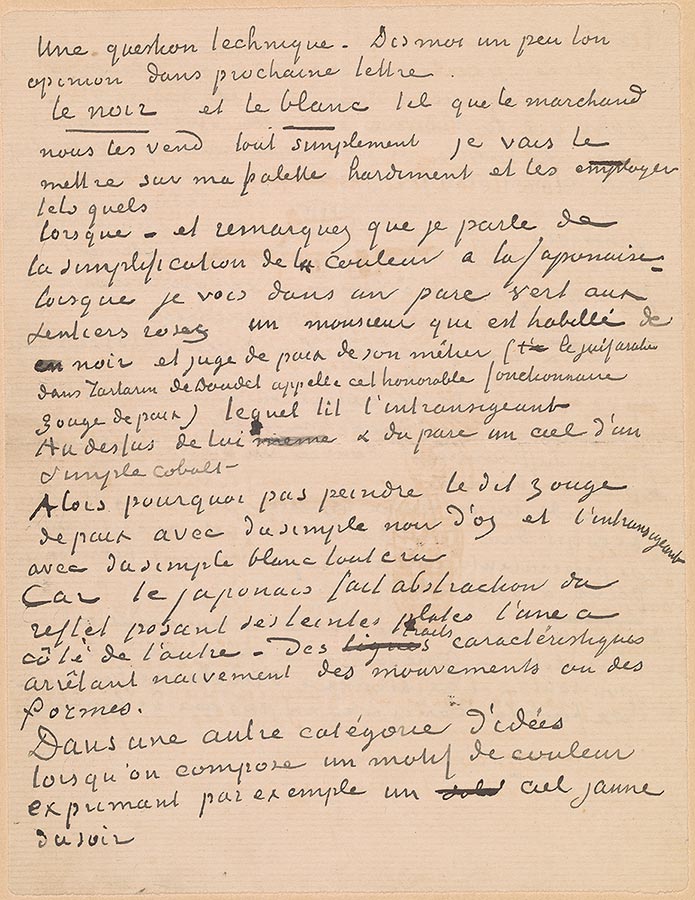
Vincent van Gogh, letter to Émile Bernard, Arles, 7 June 1888, Letter 6, page 2
Thaw Collection, given in honor of Charles E. Pierce, Jr., 2007
A technical question. Do give me your opinion in next letter.
I'm going to put the black and the white boldly on my palette, just the way the colorman sells
them to us, and use them as they are.
When—and note that I'm talking about the simplification of color in the Japanese manner—
when I see in a green park with pink paths a gentleman who is dressed in black, and a justice of the
peace by profession (the Arab Jew in Daudet's Tartarin calls this honorable official "shustish of the beace"), who's reading L'Intransigeant.
Above him and the park a sky of a simple cobalt.
Then why not paint the said shustish of the beace with simple bone black and L'Intransigeant
with simple, very harsh white?
Because the Japanese disregards reflection, placing his solid tints one beside the other—
characteristic lines naively marking off movements or shapes.
In another category of ideas, when you compose a color motif expressing, for example, a
yellow evening sky.
© 2007 Van Gogh Museum, Amsterdam
